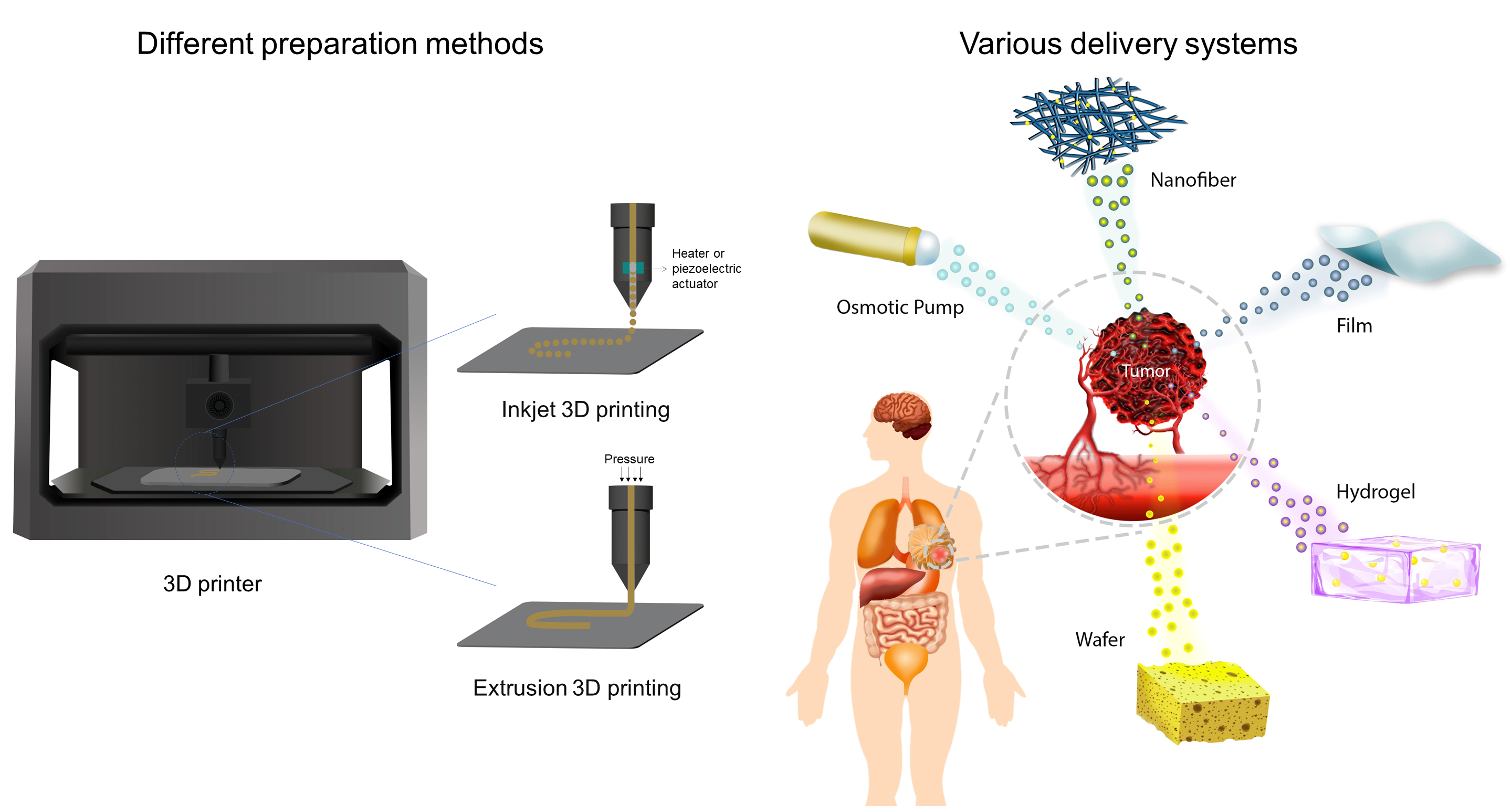Exploring the vast potentials and probable limitations of novel and nanostructured implantable drug delivery systems for cancer treatment
DOI:
https://doi.org/10.17179/excli2023-6747Keywords:
implantable drug delivery system, polymer depot, local drug delivery, controlled release, cancer chemotherapyAbstract
Conventional cancer chemotherapy regimens, albeit successful to some extent, suffer from some significant drawbacks, such as high-dose requirements, limited bioavailability, low therapeutic indices, emergence of multiple drug resistance, off-target distribution, and adverse effects. The main goal of developing implantable drug delivery systems (IDDS) is to address these challenges and maintain anti-cancer drugs directly at the intended sites of therapeutic action while minimizing inevitable side effects. IDDS possess numerous advantages over conventional drug delivery, including controlled drug release patterns, one-time drug administration, as well as loading and stabilizing poorly water-soluble chemotherapy drugs. Here, we summarized conventional and novel (three-dimensional (3D) printing and microfluidic) preparation techniques of different IDDS, including nanofibers, films, hydrogels, wafers, sponges, and osmotic pumps. These systems could be designed with high biocompatibility and biodegradability features using a wide variety of natural and synthetic polymers. We also reviewed the published data on these systems in cancer therapy with a particular focus on their release behavior. Various release profiles could be attained in IDDS, which enable predictable, adjustable, and sustained drug releases. Furthermore, multi-step or stimuli-responsive drug release could be obtained in these systems. The studies mentioned in this article have proven the effectiveness of IDDS for treating different cancer types with high prevalence, including breast cancer, and aggressive cancer types, such as glioblastoma and liver cancer. Additionally, the challenges in applying IDDS for efficacious cancer therapy and their potential future developments are also discussed. Considering the high potential of IDDS for further advancements, such as programmable release and degradation features, further clinical trials are needed to ensure their efficiency. The overall goal of this review is to expand our understanding of the behavior of commonly investigated IDDS and to identify the barriers that should be addressed in the pursuit of more efficient therapies for cancer.

Downloads
Published
How to Cite
License
Copyright (c) 2024 Maryam Ebrahimnia, Sonia Alavi, Hamed Vaezi, Mahdieh Karamat-Iradmousa, Azadeh Haeri

This work is licensed under a Creative Commons Attribution 4.0 International License.
Authors who publish in this journal agree to the following terms:
- The authors keep the copyright and grant the journal the right of first publication under the terms of the Creative Commons Attribution license, CC BY 4.0. This licencse permits unrestricted use, distribution and reproduction in any medium, provided that the original work is properly cited.
- The use of general descriptive names, trade names, trademarks, and so forth in this publication, even if not specifically identified, does not imply that these names are not protected by the relevant laws and regulations.
- Because the advice and information in this journal are believed to be true and accurate at the time of publication, neither the authors, the editors, nor the publisher accept any legal responsibility for any errors or omissions presented in the publication. The publisher makes no guarantee, express or implied, with respect to the material contained herein.
- The authors can enter into additional contracts for the non-exclusive distribution of the journal's published version by citing the initial publication in this journal (e.g. publishing in an institutional repository or in a book).





